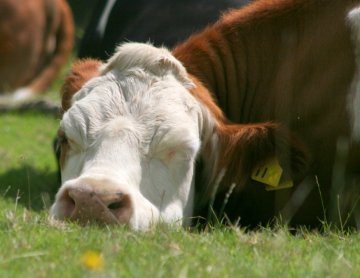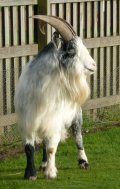 Could you switch from cow’s milk to a healthier, environment friendly alternative? Like ewe’s or goat’s milk?
Could you switch from cow’s milk to a healthier, environment friendly alternative? Like ewe’s or goat’s milk?
Ruminant milk synthesis involves pre-gastric fermentation of plant cells into mainly volatile fatty acids (VFA), peptides, ammonia, and microbial mass. Sounds delicious. Most Westerners use cow’s milk, but goat and ewe’s milk are commonly used in many other parts of the world and have been throughout our agricultural history. All have similar nutritional profiles, but the cost per litre in terms of energy and land use is far greater for cattle than for sheep and goats. Moreover, there are problems for some people who cannot digest cow’s milk, but cope perfectly well with those alternatives. Of course, it might be argued that past infancy we shouldn’t be consuming milk products at all, but that’s a non-sequitur as many of us really cannot do without the milk on our breakfast cereal…or our milk chocolate fix.
Sheep’s milk has high levels of solids and fats and is well suited to making cheese, good quality yoghurt, and ice cream. It is richer than cow’s milk in riboflavin, thiamine, niacin, pantothenic acid, vitamin B6, vitamin B12 and biotin. Goat’s has more calcium, potassium, magnesium, phosphorus, manganese, vitamins A and D, nicotinic acid, choline, and inositol than cow’s milk. It is, chemically speaking, closer to human breast milk than cow’s milk and is thought to be less commonly associated with allergies, although not necessarily as a consequence of that similarity. Add buffalo milk to the choices and you have a type of milk richer in total solids, fat, proteins and vitamins, that is also lower in cholesterol than cow’s milk.
There are thus, many potential health benefits to educating the public about alternatives to cow’s milk. Whether or not the great behemoth that is the cattle industry would move under pressure from goats and sheep is a different matter of course.
![]() Nikkhah, A. (2011). Milk of sheep, goat, and buffalo: a public health review International Journal of Food Safety, Nutrition and Public Health, 4 (2/3/4) DOI: 10.1504/IJFSNPH.2011.044566
Nikkhah, A. (2011). Milk of sheep, goat, and buffalo: a public health review International Journal of Food Safety, Nutrition and Public Health, 4 (2/3/4) DOI: 10.1504/IJFSNPH.2011.044566

1 kilogram of milk
Cow 40 g of fat (24 g saturated)
Goat 45g of fat (23 g saturated)
Cow 34 g of protein
Goat 38 of protein
Cow 140 mg cholesterol
Goat 100 mg cholesterol
Cow 930 mg phosphorus
Goat 1110 mg phosphorus